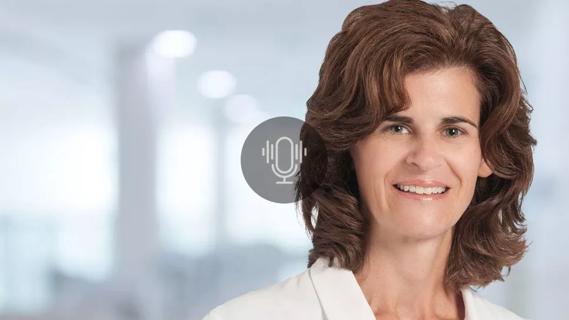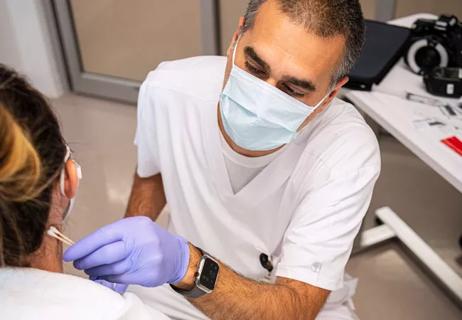Cleveland Clinic strategies focus on expanding opportunities

During the COVID-19 pandemic, nurses demonstrated resilience and strength. This challenging time has also highlighted health disparities in our communities. To combat this, the nursing profession must further develop a diverse workforce that is representative of the populations it serves.
Cleveland Clinic is a non-profit academic medical center. Advertising on our site helps support our mission. We do not endorse non-Cleveland Clinic products or services. Policy
Although nursing has made strides since the early 1990s — when only 11% of registered nurses identified as minorities — recruiting and retaining a more diverse pool of nurses will be essential to improving health and well-being across the nation.
Meaningful expansion of diversity in nursing begins with a commitment from top leadership. Cleveland Clinic has long placed a high value on diversity as a part of an overall commitment to excellence in healthcare, says Gina Cronin, Chief Talent Officer.
“We serve such a wide variety of patients,” Cronin says. “So whether that is in the city of Cleveland, in Cuyahoga County, in Abu Dhabi, in Florida, in Canada — patients we serve are very diverse by ethnicity and race, religion, physical abilities, sexual identity, and socioeconomic standards.”
The health system is further deepening its commitment this year.
“In April, we welcomed 3,000 leaders into a session called Building Inclusive Leadership. They have conversations about what inclusive leadership really means, and what commitments they can make to inclusion,” Cronin says. “The session will be followed up with further development opportunities to provide a culture that supports conversations about diversity and inclusion. You can hear it in everyday language. People are getting comfortable talking about its importance and actions that they can take.”
An estimated 28% of all Cleveland Clinic employees identify themselves as being part of a racial or ethnic minority demographic, Cronin says. Across the nation, however, expanding representation in nursing and in health leadership is still a challenge. In a 2017 study by the National Council of State Boards of Nursing and the Forum of State Nursing Workforce Centers, 19.2% of registered nurses identified themselves as being part of a minority population.
“Cleveland Clinic nursing colleagues have done a great job of building a deeper pipeline of talent,” Cronin says. “We’re not just relying on what’s coming out of the schools of nursing, although I think they have a strong commitment to building diversity within their student populations. We’re reaching even deeper into the pipeline. For example, we have Nursing Institute programs that build employee pipelines for nursing assistants and a high school program that extends into colleges for new graduate nurses.”
In addition to fulfilling an ethical commitment to reflect the community, a more diverse nursing workforce improves healthcare outcomes and equity.
“Although nurses are among the most trusted professionals as a group, we also know that patients benefit when they can connect to healthcare professionals who look like them or who share cultural connections,” says Meredith Foxx, MSN, MBA, APRN, PCNS-BC, PPCNP-BC, CPON, Executive Chief Nursing Officer. “Trust contributes to communication and aids adherence.”
Diversity also has rewards for nursing caregivers, she adds. “From the perspective of creating a healthy and meaningful career for our nurses, being with colleagues from a variety of backgrounds, with a variety of experiences, enriches our professional experience.”
Some of the biggest hurdles stem from demographic, cultural and economic issues:
• The overall need is growing for new talent to deliver expanded healthcare services and to replace retiring nurses.
• Students from economically disadvantaged backgrounds may not have been encouraged to seek careers in healthcare.
• Students from poorer school districts may need stronger preparation in math and science.
• Costs of attending nursing college can be a hurdle.
Cleveland Clinic has expanded its overall commitment to diversity, equity and inclusion through multiple initiatives.
Internally, Cleveland Clinic executives are increasing diversity in their leadership teams as part of their annual goals and objectives. Specifically, Foxx notes, they are focusing on ensuring that diversity in leadership is proportionate to the diversity on the teams being led.
Cleveland Clinic recently established the Diversity, Inclusion and Racial Equity Council. The goal for this advisory team from across the enterprise is to help drive transformational change central to building a culture free from racism, bias and health disparities that adversely impact caregivers, patients and communities. Beri Ridgeway, MD, Chief of Staff, and K. Kelly Hancock, DNP, RN, NE-BC, FAAN, Chief Caregiver Officer, are co-executive sponsors. LeJoyce Naylor, Executive Director, Office of Diversity, and Adam Myers, DPM, are co-chairs.
Externally, Cleveland Clinic is focused on removing barriers to entry into healthcare careers and to success. Programs that support these goals include:
The THRIVE Program
In 2019, Cleveland Clinic launched THRIVE, a program to support patient care nursing assistants (PCNAs) during their first year on the job. The program strengthens their skills and workforce readiness.
For many, the PCNA position serves as their entry into the workforce, and many PCNAs have diverse ethnic and racial backgrounds. THRIVE is there to reinforce needed skills and to identify potential challenges before they become barriers to success, Cronin says. “What risk points might there be that would prevent a new PCNA from being successful on day one? The orientation curriculum includes more than simply orienting new PCNAs to their job roles. It includes relational elements so we can provide support for issues and opportunities that may affect their work roles,” Cronin says.
By focusing on individual risk factors, the program has increased first-year retention. “Our hope is that PCNAs continue on into further nursing degrees as well,” Cronin adds.
ASPIRE Nurse Scholars
Sponsored by Cleveland Clinic and the Howley Foundation in collaboration with Ursuline College, ASPIRE is an enrichment program geared toward under-represented high school juniors in Northeast Ohio who are interested in nursing. Participants experience simulation, professional mentoring and evidence-based practices. They learn about college readiness and have a chance to shadow working nurses.
They also learn about the wide array of nursing career options and the rewards of caregiving.
As high school seniors, ASPIRE scholars serve as mentors for juniors in the program and have an opportunity to earn a scholarship to pursue a bachelor’s degree in nursing at Ursuline College.
OneTen
In December 2020, Cleveland Clinic joined with more than 30 large employers to become part of OneTen, a coalition committed to hire, train and promote 1 million Black Americans into sustaining careers.
At Cleveland Clinic and at healthcare institutions across the nation, improving diversity is an ongoing effort requiring strong communication and collaboration among educators, organizational talent officers and nursing leaders. “We are on a journey, and this work requires sustained attention over time,” Foxx says. “This is important work that benefits all involved, so we’re eager to do it.”

Holistic nurses work across all nursing specialties to support patients and caregivers

Nurses play pivotal role in patients’ ability to recover in the comfort of their own homes

Advocating for patient safety is imperative in fast-paced surgical settings

Advice for those pursuing a WOC nursing career

Redesigned protocols enhance infection-prevention measures

Longevity in healthcare, personal experiences may provide caregivers with false sense of confidence

Specialized team prioritizes trauma-informed care and evidence collection

Collaborative approach leans on expertise of nurses